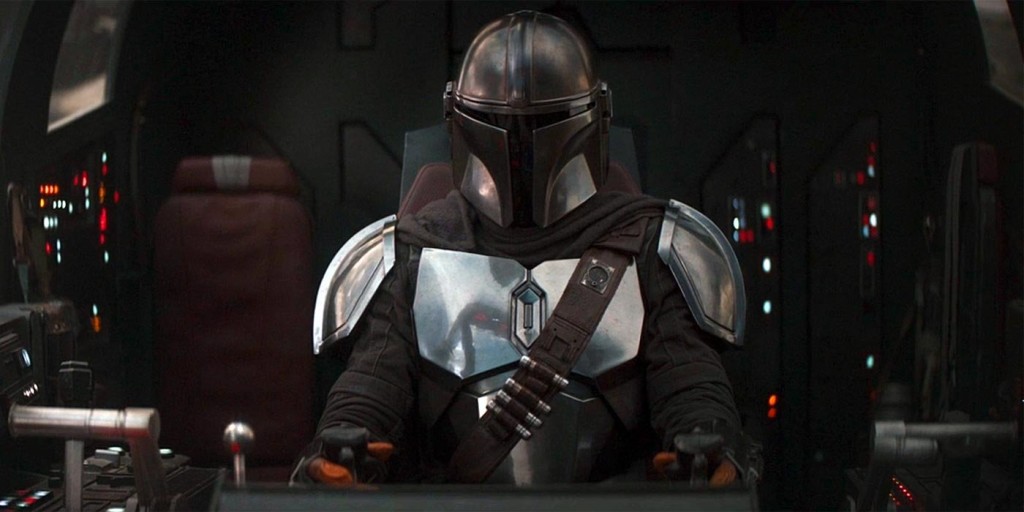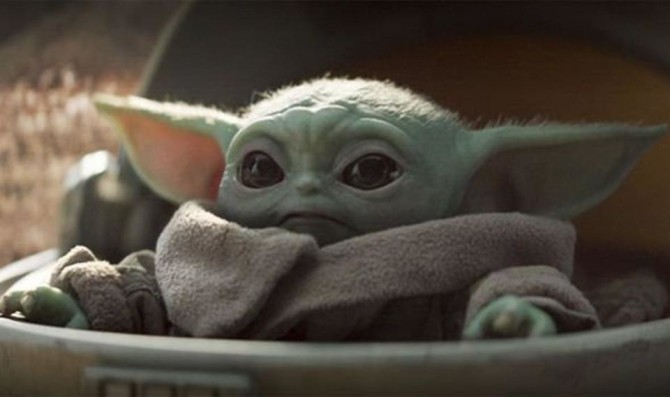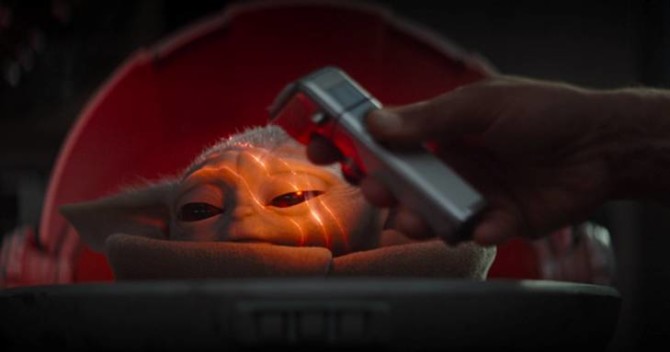Welcome to The Mandalorian Teleplay Chronicles. I will be reviewing every episode of The Mandalorian’s first season with an eye towards helping writers learn TV writing. Whether the show is a breakout hit or a Jar Jar Binks level bust, we’re going to be focusing on how to become better TV writers. Here’s a link to my review of the first episode here and also a link to the second episode.
Genre: TV Drama/Sci-fi
Premise: After the Mandalorian returns Baby Yoda for his bounty reward, he begins to have doubts about whether he’s done the right thing.
About: Chapter Three of The Mandalorian is written by Jon Favreau and directed by Deborah Chow, who is not only directing the seventh episode in the series but will be directing the ENTIRE Obi-Wan series, which initially seemed like a big task until Star Wars Net revealed yesterday that each episode will be only 7 minutes long. Oh stop it. I kid, I kid.
Writer: Jon Favreau
Details: 40 minutes (but without the lead-in or credits closer to 35 minutes)
Short episodes?
Good idea? Bad idea?
One of the most surprising things about The Mandalorian has been the episode length. And while, at first, everyone was angry with the choice, myself included, I’m starting to rethink my position. These last two episodes have been really good and I’m thinking that’s at least partly due to the fact that there’s no filler. Every scene moves the story forward.
I’m guessing that when they were putting these together and were asking the tough questions about how we make this feel like “Star Wars” but on a smaller budget, one of the ideas floated was, “What if we just made the episodes shorter?” Time is money in production. A minute of a Game of Thrones episode costs 200 grand. So if you can make your episode 40 minutes as opposed to 60 minutes you can save 4 million bucks! And you can move that saved money into other parts of the production.
So how did this episode compare to last week’s? I think I liked this episode even better. Baby Yoda may be the most inspired story choice ever – a screenplay cheat code. You can do some dumb a$$ stuff and we don’t notice because Baby Yoda just got out of his crib and started playing with a gear shifter.
But it’s not just that. There are some serious screenplay lessons to take from Baby Yoda. When you create a character, particularly a young character, who can’t fend for themselves, there’s a built in need for us to keep him safe. One of the reasons this episode never lags is because we’re so focused on if Baby Yoda is okay. We will not leave our seats or pause our televisions until we know that Baby Yoda is back in the Mandalorian’s care.
When you can create that kind of obsessive need between an audience and your characters, you’re got them in the palm of your hand. That’s what every writer who’s ever written wants. They want the audience in the palm of their hand. Why? BECAUSE IT’S SO HARD TO F*CKING DO. And Favreau figured out how to do it. And don’t discount this as some gimmick. In 8 movies dating back to the prequels Star Wars has tried to create a character this beloved and haven’t been able to do it. Baby Yoda is a revelation.
To give you a quick recap of the episode, the Mandalorian brings Baby Yoda back for his bounty and is paid handsomely. We can see some hesitation as he hands Baby Yoda over to the bad guy but after he uses the money to buy new armor, he’s feeling fly enough to forget about Baby Yoda. Or so we think.
He heads back to Greef Carga to get his next bounty where all the other bounty hunters are giving him the evil eye, as they were all after Baby Yoda too. After getting a new bounty chip, he heads back to his ship. However, right before he’s about to take off, something reminds him of Baby Yoda, so he turns the ship off and charges back into town.
He infiltrates Bad Guy’s hut, grabs Baby Yoda back, but as soon as he gets to the main street, those same bounty hunters who hate him are right there, making sure he’s not going anywhere. For the Mandalorian to get out of this, he’ll have to outwit upwards of 100 gun-happy aliens. With a baby in his hand! Can he do it? Or is he doomed and this is the end of the series?
Okay, since this Scriptshadow Series is about writing for television, let’s discuss what episode 3 of a season should be. Episode 1 was our “Introduce the world and main character and give us a great cliffhanger” episode, which is exactly what they did. Baby Yoda may be the greatest cliffhanger ever. Episode 2 is the “Proof of concept” episode where you give us an episode that shows us why your show is great. We get that with a fun “Jawas stole my ship” episode. With episode 3, you want to start opening up your world. The idea is that the audience comes into this episode thinking they understand the scope of your show but you show them that the scope is actually much deeper and more complex than they realized.
Why is this important? Because you want to create the thought of long-term commitment in the viewer’s head. Before they were just like, “This is fun! Baby Yoda!” You want them to start thinking beyond the next episode, into the full season, and, ultimately, into the whole series.
“The Mandalorian” accomplishes this by giving us more time in the mandalorians’ secret hideout underneath the town. We learn about something called the “Purge,” which killed a lot of Mandalorians after the fall of the Empire. They’re trying to build their people back up again. And the only way for them to do that is to stick together and honor the code. Going into this episode, I thought these Madalorians were bounty hunters who looked cool. But I left learning that there’s a lot more going on with their species and that they have a larger collective goal (to build their people back up).
Let’s move into plotting. When it comes to plotting your TV episodes, you should be using basic storytelling techniques. A character goal, stakes, urgency. That’ll do you good most of the time. However, you do need to mix things up sometimes so that the pacing of the show doesn’t get predictable.
For example, the “goal” of this episode doesn’t arrive until 40% of the way in, that goal being to get Baby Yoda and escape the planet with him. The first 2/5 of the episode, where the Mandalorian hands Baby Yoda over then heads off to his next job, doesn’t have a goal (well, he sort of has a goal, to get his next bounty, but it’s a false goal). So how does this section of the screenplay still work?
There’s a lesser known storytelling device which I’ve nicknamed “separation anxiety.” This is where you take two characters that the audience desperately want to see together and you cruelly split them apart with the threat that they might never see each other again. This is the device which I liked so much in the second half of the movie “Room,” with Brie Larson. She gets taken in for medical evaluation after they’ve escaped their captor, and that whole second half of the movie is driven by separation anxiety. We’re not going to be satisfied until her and her son are back together again.
The exact same thing is going on here. I want you to close your eyes and go back to the way you felt in the scene where the Mandalorian hands over Baby Yoda to the bad guy. I’m guessing it made you feel uncomfortable. I’m guessing you were thinking in your head, “No. NO. No. Don’t do it.” And once the Mandalorian left the exchange, I’m guessing all you were thinking about was, there’s no way he’s not going to go back and get him, and that the main reason you kept watching was for that. That’s an effective use of the separation anxiety technique.
It should be noted that this only works if you’ve done great character work with the two characters you’ve separated. That we not only like the characters individually but we like them together. Another key component to making separation anxiety work is selling that THEY’RE NOT GOING TO GET BACK TOGETHER. So you’ll notice that the Mandalorian makes it all the way back to his ship — even STARTS THE PRE-LAUNCH — before he changes his mind. We’re hopelessly thinking, “Is he really going to leave??”
It’s HERE where the story engine switches back to traditional GSU. His goal is now to get Baby Yoda and get off-planet. Stakes and urgency are also high.
But let’s get to the real juicy talking point of this episode. (spoilers) The deus ex Machina ending. All the mandalorians come and save Mando and Baby Yoda at the last second. This is the second deus ex Machina ending in the series so far. And there’s only been three episodes. Mando is about to be slaughtered by the Bullhorn creature when Baby Yoda force-saves him. And now the mandalorians show up and save him right as he’s about to be slaughtered by 100 bounty hunters.
Before you get upset, Star Wars has a long history with deus ex machinas. It’s got one of the originals, when Han Solo takes out Darth Vader just as he’s about to kill Luke so that Luke can blow up the Death Star. But not all deus ex machinas are created equal. And there are a few things you can do to make them work. When the deus ex machina is rooted in an emotional arc, it works. Luke didn’t just get saved by anyone. He got saved by someone who only cared about himself the whole movie, who arced into a character who finally cared about others. Our excitement that Han finally came around trumped the use of the deus ex machina.
Another thing you can do, which is what they did here, is create a half-and-half deus ex machina. This is where your hero does everything in his power to save himself first. So we see the Mandalorian jump in this droid cart and head down the street and keep shooting everyone and do everything in his power to survive. It’s only then that the deus ex machina arrives. We would’ve hated the deus ex machina had it occurred right at the beginning of his trouble when all the bad guys surrounded him. We need to see that our hero tries to solve his own problems first and we’ll be more forgiving is he’s saved after exhausting all those options. It’s never as good as your hero figuring things out on his own. But it’s certainly better than a straight deus ex machina where your hero doesn’t have to lift a finger.
I have to give Favreau credit. I didn’t think he was capable of this. But these last two episodes prove that this isn’t just trending to be a good show, it’s trending to be a great one. I can’t wait for the new episode next week. Nothing like a little Star Wars Black Friday combo. What’d you guys think?
[ ] What the hell did I just watch?
[ ] wasn’t for me
[ ] worth the stream
[x] impressive
[ ] genius
What I learned: Get some extra mileage out of your setup and payoff. Most people think of setups and payoffs as one-two punches. But you can actually get an extra moment out of them when the right opportunity presents himself. The setup and payoff everyone is talking about in this episode is when Baby Yoda starts playing with a ball joint from one of the levers on Mando’s ship as he’s landing at the beginning of the episode (setup). Then, when Mando has collected the bounty and is about to leave the planet, he goes to pull that same lever and sees that the ball is missing (payoff). It’s that hesitation that gets him to turn around and go back for Baby Yoda. It’s a wonderful moment. But wait! We get a SECONDARY PAYOFF when, at the end of the episode, when we’re back in the ship and Mando and Baby Yoda are leaving the planet, Mando unscrews the ball and hands it to an eager Baby Yoda to play with. It’s a heartfelt moment and a reminder that some payoffs have one more use in the tank.




